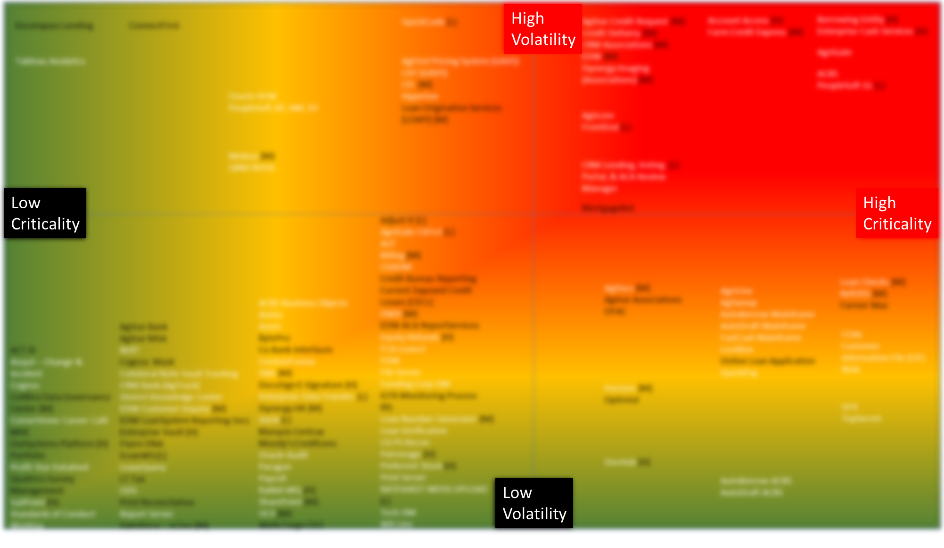AgFirst Farm Credit Bank provides wholesale funding, as well as technology and other value-added services, to Association partners in 15 states of the US and Puerto Rico. Those Associations provide loans and related financial services to rural residents and agricultural operations of all sizes. A $40 billion company, AgFirst is one of four wholesale banks within the nationwide Farm Credit System.
The Challenge
In the spring of 2022, leadership teams at two Associations within the AgFirst District, AgCarolina and Cape Fear, agreed that a merger would result in better services for their respective customer bases. Therefore, Association leaders began working closely with the AgFirst executive teams to establish a timeline for the merger, which ultimately occurred on Jan. 1, 2023.
During this period, the Bank was already preparing for a rollout of its Digital Transformation initiatives, as well as a July 4, 2022, merger between two other Associations within the District. Bank teams agreed that a robust approach was required to deliver a world-class implementation for the AgCarolina-Cape Fear merger that would not disrupt human and computing resources required to complete other strategic initiatives also underway.
The Approach
AgFirst’s Chief Information Officer, Steve Ciambrone instructed IT and product teams to add capabilities that would advance the merger without disrupting other key business activities. In response, Bank teams cataloged applications within the scope for the merger along two dimensions: Volatility, the number of changes that occurred during the previous year, and Criticality, the business impact if a system became unavailable. The following System Risk Matrix illustrates the results of that analysis:

Figure 1 — Risk Matrix
Using the matrix, Bank teams were able to identify systems that were less critical and not volatile. Those in the lower left quadrant became the scope for our engagement with GAVS.
The Strategy
Because AgFirst employs Agile and DevOps methodologies for most projects, Bank teams elected to use those practices as a basis for the AgCarolina-Cape Fear merger. Although the merger team would benefit from the practices and tools, it was also easier for other teams to participate in merger-specific activities through a familiar set of deliverables. At a high level, the merger process focused on four such deliverables:
- Documentation – Requirements, Technical and Testing.
- Environments – Development, Integrated Testing, User Acceptance Testing and Production.
- Merger changes – Changes made to systems to produce appropriate data and a positive user experience after the merger.
- Validation – The manual review of system output.
AgFirst teams used a dedicated Azure DevOps board to post and track Product Backlog Items (PBIs) and held daily scrum meetings across three GAVS development teams. Teams also posted PBIs to other internal boards as appropriate. All work was managed using one common project plan.
The Project Plan
The AgFirst digital environment is complex and highly integrated. For this reason, Bank teams worked with the Business System Owner (BSO) and Technical System Owner (TSO) for every system in scope for the merger – about 80 in total. A project plan became an indispensable vehicle for collaboration among all teams involved in the merger activities. To capture the right level of detail for these systems across all phases of the merger process, Bank teams generated over 5,000 individual tasks in the project plan. The project management team used the plan to conduct status meetings and captured all changes and concerns discussed during those meetings in the project plan. The merger core team met several times a week to review those issues and determine the best courses of action. The merger’s project manager was responsible for posting the most up-to-date version of the plan on a SharePoint site, where everyone involved in merger activities could view changes that could potentially affect their work.
The Implementation
On Friday, Dec. 30, 2022, AgFirst began its last production run of the year. After all was finished according to plan, Bank teams began merger changes at 7 a.m. the following day. This was where the “rubber met the road,” and our planning was put to test. We did not know where we would find surprises, but we were certain some would surface. That was the case at 3 a.m. on Jan. 1, 2023. The right team members quickly detected a problem and determined its potential impact on the project and our timing for the merger. We chose a course of action that would ensure timely completion of the merger but also address the problem via a post-merger fix. Before 9 p.m. on New Year’s Day, we announced that all systems were in their appropriate state and that the merged systems were a go. This was over an hour ahead of schedule – a reflection of the hard work, meticulous attention and open communication across multiple teams that made this merger project a success.
The Results
AgFirst Farm Credit Bank’s partnership with GAVS proved to be invaluable throughout the course of merger planning, preparations and execution. This synergy enabled Bank teams to:
- Expand the capacity of our teams.
- Offload work from overburdened resources.
- Maintain 24×7 coverage to run and monitor jobs.
- Leverage our work on this complex undertaking for other initiatives underway.

Author
Julie Mooney, Director Product Management Information Delivery, AgFirst Farm Credit Bank
Julie Mooney works at the AgFirst Farm Credit Bank as a Director of Product Management. Over her 19 years with AgFirst, she has worked as a business analyst, data warehouse analyst and modeler, and product manager.




